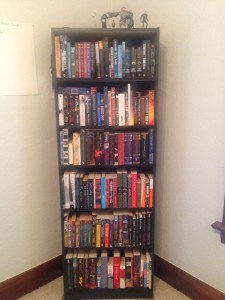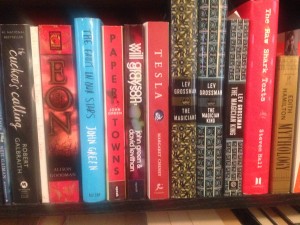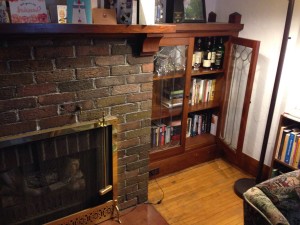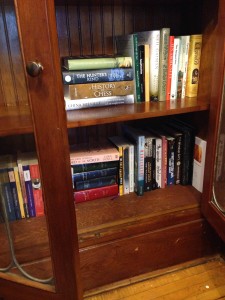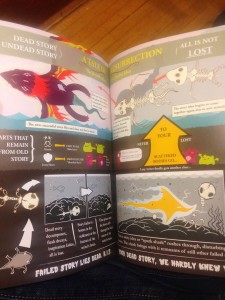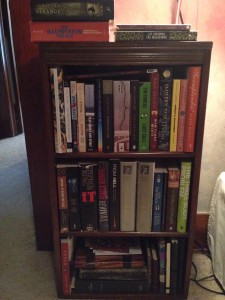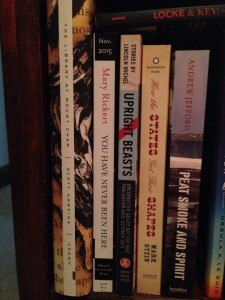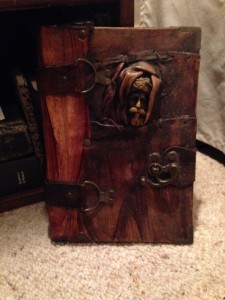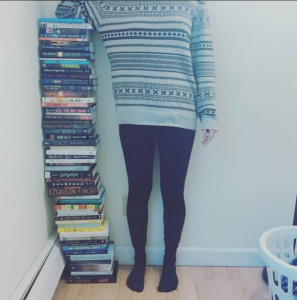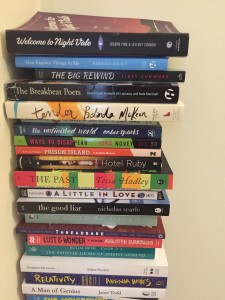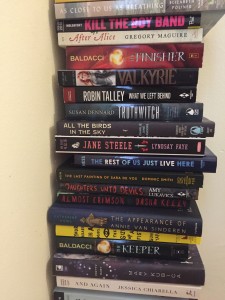
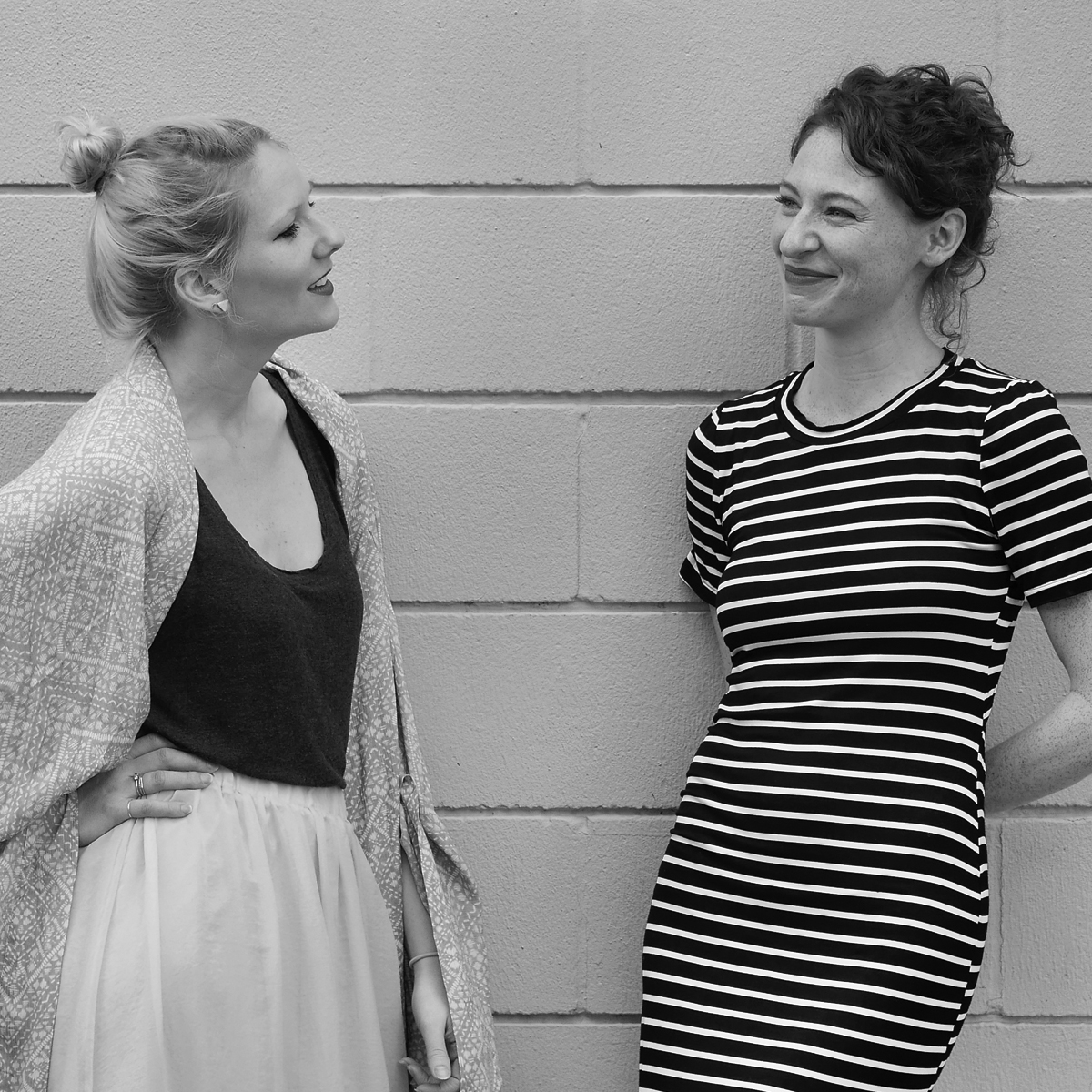 In last week’s staff round-up, I wrote (re: gushed) about Into: Minneapolis. Into Quarterly is a “city-inspired arts journal” that visits cities around the U.S. and publishes a portrait of that city through its artists and writers. Through my day job at The Loft Literary Center, I’ve gotten to know the two founders of Into Quarterly, Virginia Sasser (left) and Laura Benys (right) in conjunction with the publication’s launch event at the Loft this Friday, Dec 9 at 7 pm. Let me just say: I am crushing hard core on these two creatives and their publication. To top it off, after getting a sneak preview of the issue, I fell head over heels for the city I live in again, seeing it through the eyes of 40 local writers and artists. These writers & artists pose hard and thoughtful questions to themselves and our city with beauty, honesty, and heart. In turn, I asked Virginia and Laura a few questions about Into: Minneapolis recently, and they answered in much the same way: with beauty, honesty, and heart. It’s a match made in, well, art.
In last week’s staff round-up, I wrote (re: gushed) about Into: Minneapolis. Into Quarterly is a “city-inspired arts journal” that visits cities around the U.S. and publishes a portrait of that city through its artists and writers. Through my day job at The Loft Literary Center, I’ve gotten to know the two founders of Into Quarterly, Virginia Sasser (left) and Laura Benys (right) in conjunction with the publication’s launch event at the Loft this Friday, Dec 9 at 7 pm. Let me just say: I am crushing hard core on these two creatives and their publication. To top it off, after getting a sneak preview of the issue, I fell head over heels for the city I live in again, seeing it through the eyes of 40 local writers and artists. These writers & artists pose hard and thoughtful questions to themselves and our city with beauty, honesty, and heart. In turn, I asked Virginia and Laura a few questions about Into: Minneapolis recently, and they answered in much the same way: with beauty, honesty, and heart. It’s a match made in, well, art.
Hazel & Wren: Can you tell us about how Into Quarterly began?
Into Quarterly: We were neighbors in Austin! We’re both freelancers, and our unconventional schedules made for lots of afternoon coffees and happy hours and talking about writing and design…. Then Virginia moved to Brooklyn, and we started sharing our personal projects with each other as a way of staying in touch. We became intrigued by the way being in two different cities started affecting the style and content of our art. We also loved considering our own work as a reaction to the other’s; those unexpected combinations of the written and visual is magical to us. That’s what led us to start a larger conversation with other writers and artists who might deepen this perspective.
A big inspiration has been the fact that beautiful print journals like Kinfolk and Cereal and Gather have made a resurgence. We wanted to try that on our own scale, but with a theme that was purely creative rather than editorial or guidebook-like. We thought about what brings together a bunch of artistic perspectives, and ties them together without forcing them into a mold or narrative. Of course, place is one of those things. We got really excited about seeing how a city at once unifies and sets apart the artists living in it.
Obviously, our ulterior motive was to get to know cities and artists we admire. Sneaky, right? We love how different cities have different personalities and vibes. We wanted the artists themselves to show us what that was.
H&W: Since you are not necessarily from or familiar with some of these cities, how do you find the artists and writers for each city? How do you make sure that these are the writers to showcase that specific city?
IQ: We ask for a lot of help, through friends and friends of friends, and also of complete strangers. We approach cultural icons like the Loft Literary Center and plead for advice. We always look into the city’s spoken word scene. We check out recent grant or award recipients, but we also look at the runners-up. We get referrals from the artists themselves. In the cities we’ve done so far (Austin, Richmond, Minneapolis), the creative communities have been very supportive of each other, and eager to talk each other up. We value pulling writers from both under-the-radar niches and more obvious places, and strive for a mix of established and emerging artists; that’s really important to us.
H&W: Can you talk about the work represented in the Into: Minneapolis edition, and some of the artists and writers that especially stand out for you?
IQ: The book continues work by 40 incredible writers and visual artists. It is at times funny, somber, sardonic, hopeful, dreamy, tough, gritty. Think Heid Erdrich’s writing paired with art by Bobby Rogers, or Dyani White Hawk’s art against a new poem by Ed Bok Lee, or Bao Phi with Kate Worum. We were giddy about seeing what themes and textures these combinations brought out.
Most of the written pieces are short or very short, but we always do one featured short story for each volume, and Into: Minneapolis features Sarah Stonich (AKA Ava Finch). Her new story is gorgeous, vivid, and heart wrenching without a hint of sentimentalism. We are over the moon that she is giving us this chance to introduce it to the world.
We are also proud to feature a photo essay by Shelly Mosman, who presents a Minnesota portrait series. Her work is stunning, and speaks volumes about the toughness, nuance, and beauty of the North. We could stare at these photos all day.
For other artists that especially stand out—there are too many examples to list! Eliesa Johnson, Danez Smith, R. Vincent Moniz, Jr., Michael Cina, Kao Kalia Yang, Matt Rasmussen… We really must refer folks to the contributors list.
H&W: What do you think Into: Minneapolis says/explores/shows about our city?
IQ: That the people here are strong. And that, for all its beauty and rugged coolness, this city thinks that honesty is more important than airbrushed perfection. When we began this volume, we asked artists to share works inspired by their relationship to Minneapolis. They didn’t dwell only on the (albeit many) obvious boasts of this city. Instead, they used art to challenge assumptions and start important conversations. They grappled with questions of identity, kindness, and equality, and how to understand themselves within the place they call home. It’s a credit to them, and to this community. As a city known for its art and activism, Minneapolis creates the space for these conversations, and for the many perspectives that are a part of them. It may not always be comfortable, but this city aspires to nobler goals than comfort. We think that comes through in the book.
H&W: How do art and writing affect a city’s identity, in your opinion (and experience with Into Quarterly)?
IQ: We didn’t want our expectations to be overly optimistic on this front at first—but are excited about how this is playing out. It seems like writing and arts in each city not only provide a glimpse into the stylistic nuances, motifs, and aesthetic anomalies of a place, but what is important to the people there. They set a tone. In Minneapolis, we found that artists often used their work to explore questions of identity, from Bao Phi’s poem “Refugees from the Prom Center, the Eighties” to Jovan Speller’s “And I shall call you home,” a photographic meditation on being a black woman in Minnesota. We also found a strong current of activism running through the work that artists shared with us, from Eliesa Johnson’s portraits of the Philando Castile and Jamar Clark marches to R. Vincent Moniz’s poetry in solidarity with the Oceti Sakowin Camp. Especially this year, when there’s so much sociopolitical stuff going on, voices from the various arts communities are that much more important. They bring beauty to a strong stance, and define a larger community attitude, while also playing on the special things about that city that no one wants to lose sight of. It’s really cool to see, and we feel lucky to be observing it through this collection right now.
Psst: For those who will be in/near Minneapolis this Friday, don’t forget: the publication’s launch event is at the Loft this Friday, Dec 9 at 7 pm.
The Writing Life: Independent Bookstore Day

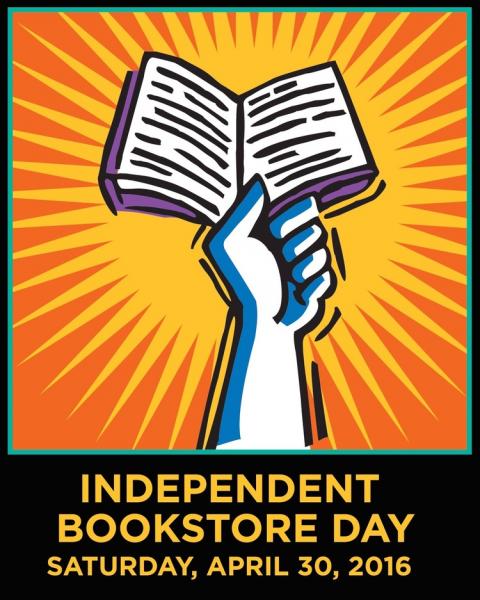 Chances are, if you’re reading this blog, you love books. Heck, I might even go as far as to say you’ll probably agree with me that independent bookstores are an essential resource for said books. If all of the above is true, then take note: Saturday, April 30th is Independent Bookstore Day (IBD). It’s a nationwide day, and the Twin Cities is celebrating for you locals, too.
Chances are, if you’re reading this blog, you love books. Heck, I might even go as far as to say you’ll probably agree with me that independent bookstores are an essential resource for said books. If all of the above is true, then take note: Saturday, April 30th is Independent Bookstore Day (IBD). It’s a nationwide day, and the Twin Cities is celebrating for you locals, too.
Since this will be my first Independent Bookstore Day as a participant, I sat down with Robert Martin from Midwest Booksellers. He is a big local supporter, and helped with the passport for this year’s Twin Cities edition of Indie Bookstore Day (more on that passport later). He gave me some background context on this relatively new national day.
“It’s based on record store day,” Martin told me. “One day per year event, bookstores make limited edition items available and you can only buy it that day at participating stores.”
It started in northern California, and did so well that the campaign went national last year. The Twin Cities participated then, too, and activities have increased this year.
The limited edition items available on IBD are pretty enticing to a literary nerd like myself. You can find the full list on the Indie Bookstore page (scroll down on the home page), but a few highlights: Neil Gaiman Coloring Book, Anthony Bourdain’s Perfect Burger Print, an exclusive numbered signed version of Kate DiCamillo’s newest book Raymie Nightingale…and the list goes on. Locally, there will be a few extra limited editions treats available, such as a letterpress broadside from Coffee House Press. These are things you can only purchase in person, at these bookstores, on this one specific day.
“I think of it as a way to reward people who already shop at independent bookstore, people who love books, people who love specific authors, and like getting into the collecting side of things,” said Martin.
But more than the prizes, each participating bookstore will be having their own little party to celebrate. Martin told me that “The items are the main draw, but really it’s just a day, if you like books if you like having bookstores in your town, then go to a bookstore that day […] it lets them know you support them. The more people show up to these things, the more fun it is.”
Why in Minneapolis? It’s the “first time stores have really worked together to showcase how huge bookselling is in our cities, and it’s a huge part of our cultural identity that I hope a lot of people recognize,” said Martin.
Ok, so now you know how awesome this day will be; but what about the logistics of the thing? It’s easy: you can find participating bookstores in your city here. If you’re in the Twin Cities, go to one of the participating bookstores, and you’ll get a couple Minnesota-specific items: a IBD passport (produced by the participating bookstores), and a Twin Cities indie bookstore map (produced by Moon Palace Books). The passport images are by artist Kevin Cannon, and make the passport itself something to treasure. With those items in hand, you can plan your route. If you go to all 10 participating stores and get your passport stamped at each, you’ll get gift cards to each and every store. PRETTY AMAZING, right?
For Twin Citians, participating bookstores are: Birchbark Books, Common Good Books, Daybreak Global Press Bookshop, DreamHaven, Magers & Quinn Booksellers, Moon Palace Books, Paperback Exchange, Red Balloon Bookshop, Subtext Books, and Wild Rumpus.
For more information on what each Twin Cities bookstore will be doing, visit their Facebook pages or websites; but also, here are two great round-up articles from the Star Tribune here and MPR here (which also talks about participating bookstores in greater Minnesota).
Bottom line: go to your favorite bookstore and see what they’re up to. Chances are, you’ll get to join in a literary love-fest, nab some exclusive items, and support your local indie bookstore community. Twin Cities folks, I’ll see you out there!
Hazel & Wren Staff Shelfie: Josh Johnson
Editor’s Note: Dear readers — today, we share with you this staff shelfie installment, from another one of our newest staff members, Josh Johnson. (Aaron, Wren, Jessica, Taylor, and Cassidy have previously shared their shelfies.) We’re so happy to have Josh and his slightly flammable reading habits on the Hazel & Wren team. Read on!
I was tempted to clean up and (re)arrange when taking the photos for this post. Many of my shelves have fallen into states of chaos or unrest. The chess books are getting a little too familiar with speculative fiction, and I suspect fraternization between the poetry and non-fiction books. It’s a mad house.
Here’s a bookcase plunked down in the corner of the office. It was meant to house our sci-fi and fantasy books (or at least some of them). It has favorites of mine from various points in my life: The Prydain Chronicles by Lloyd Alexander (top shelf, to the left), Ted Chiang’s incredible Stories of Your Life and Others (second shelf, right side), and Stephen King’s The Stand (down on the bottom, which seems to be the Stephen King shelf. The bookcase seems to be pretty consistent, but on closer inspection…
Here’s the fourth shelf down, and we have some of John Green’s books next to a biography of Tesla, which is next to the start of a fantasy series. I love all of these books equally, but I have no idea how they ended up on the same shelf together. I suspect midnight migrations.
One of my favorite things about our new house is all the cool, original woodwork. This cabinet, conveniently located next to our fireplace, has come to house new books and scotch. And I’m just realizing now how strange it is to keep bundles of paper and bottles of alcohol in an old wooden box next to the place where fires happen.
Here’s a slightly closer look. This is the place that has been getting all the new acquisitions in our household. Down there on the bottom—that blueish one with the red lettering—that’s the incredible and incredibly fun Wonderbook by Jeff Vandermeer. It’s a writing craft book, but it looks like this on the inside…
The title of this spread is “A Tale of Resurrection: The Beatification of a Failed Idea.” The perfect kind of book to enjoy while drinking scotch next to a burning cabinet.
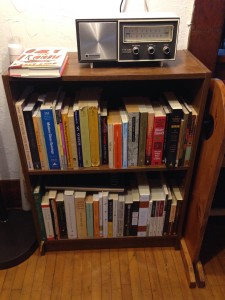
To the right of that bookshelf is this little fella. Purchased from Target probably, this shelf holds up our unbelievably old radio and houses many of my chess books (the top shelf, left half) and a random assortment of literary fiction, non-fiction, and speculative stuff. Next to the radio is a copy of Kelly Link’s recent collection Get in Trouble, not shelved yet due to either my laziness or its unwillingness to play nicely with others.
This one is my favorite bookcase in the house. It’s right next to my side of the bed and holds a few different groups of books. The first, there at the top left, is the growing collection of review copies I’ve received for Hazel & Wren!
I’ve only received three review copies so far, but I’m still not over how cool it is to have someone send me a book so that I can read and write about it. Heck yeah!
How the States Got Their Shapes is a book acquired during a game Rachel and I like to play in bookstores. We go in and each try to find a book the other person would probably never buy/encounter/read in their life, and then we buy it. Browsing a bookstore with someone else in mind (especially when he or she is there, also browsing with someone else—you—in mind) is a lot of fun. Rachel bought me this book, partially because it fit the requirements of the game and partially because my grasp of even basic geography is shockingly bad.
The other books in this bookcase are all of my most immediate To-Be-Read books supplemented with books I’m sort of constantly reading or rereading. It’s a weird smattering of things, but if there’s a shelf (or case) that best represents me in the house, it’s this one.
And down at the bottom of the case are a bunch of the journals and notebooks I’ve kept over the years. Including this one…
I picked up this notebook when I was in England several years ago. It’s still easily one of my coolest possessions. I filled the first few pages with a novel idea that never went anywhere, and I’ve been waiting for the right idea to come along for the rest.
What do your shelves look like, reader? Are they carefully monitored or do you have intergenre mingling as I do?
Hazel & Wren Staff Shelfie: Cassidy Foust

Editor’s Note: Dear readers — today, we share with you another one of our shelfies. Aaron, Wren, Jessica, and Taylor have shared their shelfies, and we’ll have yet another next week. Today’s post is from one of our newest staff members, Cassidy Foust. We’re so happy to have her and her book-stacking self on the Hazel & Wren team. Read on!
Friends, I have a confession. It’s a terrible, blasphemous confession:
It’s not that I don’t have enough books to warrant one. As an English major who spent her college years working in a bookstore, I have accumulated more than my fair share of paperbacks, textbooks, picture books, and galleys. And yet, somehow, nowhere along the line did I ever acquire a bookshelf. Instead, I became… a book piler. I pile books under my bed. I pile them on top of my desk, on the top shelf of my closet, or just on the floor. Sometimes, they’re organized. Mostly, they’re precariously stacked in an entirely random configuration (and the book I most want to read is always, always found at the bottom).
This particular stack is my newest jumble of books. I stood next to them for scale. I’m 5’9″.
The top of this pile features several of my current favorite reads: Men Explain Things to Me (by Rebecca Solnit), a series of snarky feminist essays on “mansplaining”; The Breakbeat Poets: New American Poetry in the Age of Hip-Hop (edited by Kevin Coval, Quraysh Ali Lansana, and Nate Marshall), a stunning anthology; and Welcome to Night Vale (by Joseph Fink and Jeffrey Cranor), a geeky sci-fi triumph based on the popular podcast.
The middle of the pile holds a book very near and dear to my YA-genre-loving heart: The Rest of Us Just Live Here, by Patrick Ness. It’s one part homage to, one part satire of the dystopian/fantasy trope of the “Chosen One” — the story of what happens to the normal kids in town while the Chosen Ones are off fulfilling prophecies and sacrificing goats to vampires. It’s the Cabin in the Woods of young adult literature, if you will. Ness pokes fun at the genre (and also himself) while also explaining that it’s okay to love hokey stuff like this. At the end of the day, Ness says, we don’t read genre lit for brilliant plotlines or stunning worldbuilding (though those might be side-effects). We read it to connect to each other. We read it because, underneath the unicorns and alien abductions, we’re all just humans struggling to be.
The middle of this pile comes with a second confession (though this one is likely more familiar to most bibliophiles I know): I haven’t actually read about 85% of the books I hoard. I can’t walk past a bookstore without buying at least one thing. If I magically find myself at an event where books are being handed out for free, I take all of them. All of them. This bad (?) habit, plus the fact that there are only 24 hours in a day, means that I rarely ever finish all of my TBRs before buying new ones.
In my opinion, there are much worse problems to be had. Because of my myriad book stacks of unread titles, I will never face the agony of not having anything to read. My book piles may not be tidy (or accessible… or practical…), but they’re great conversation starters, and hey — I’m always prepared to stage an impromptu obstacle course.
What are some unconventional places you’ve stored books?
